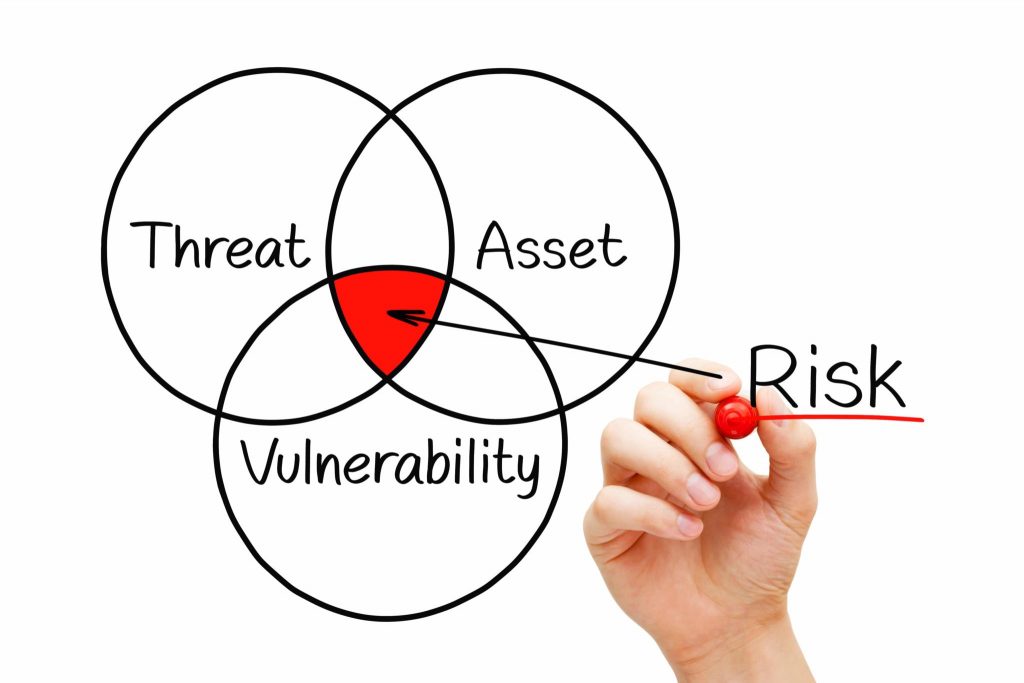
Introduction to the HIPAA Risk Analysis
Under the HIPAA Security Rule, every covered entity (CE) and business associate (BA) must carry out guarantees of safety. It concerns any type of healthcare organization, plan, and provider, that shares electronic healthcare data within HIPAA requirements. Such guarantees of safety have to defend the privacy, wholeness, and accessibility of ePHI – the type of protected health information, that is maintained electronically.
You must be curious about where to start, so you could implement those guarantees efficiently. The answer is quite simple. The most effective step toward the realization of the security safeguards is to conduct an annual HIPAA risk analysis. This approach involves the exact and detailed evaluation of possible vulnerabilities and threats to the ePHI wholeness, accessibility, and privacy. But it is not the only benefit of this approach. The risk analysis also protects the organization in the case of data breaches or a sudden HHS Office for Civil Rights’ HIPAA audit. There is a higher chance to get big monetary fees if not conducting the analysis.
So, in this guide, you will learn about elements of the HIPAA risk analysis and how to implement them in practice. Interested? Let’s get to the point!
What is the Aim of the HIPAA Risk Analysis?
The primary goal of the HIPAA risk analysis is to assist health entities in documenting possible vulnerabilities, dangers, and risks. Vulnerabilities can directly lead to unauthorized ePHI access. For instance, if a company hasn’t envisaged the process of ePHI access denial for employees that have left the organization, it can lead to data breaches. Especially if an employee didn’t quit on the good terms. Such a type of ex-workers is a potential threat. And the lack of this process is a weak point, that can be exploited by the potential threat.
Thus, the risk is defined by the realizing of the possible usage of the vulnerabilities by the dangerous individuals and the connection of this possibility to the prospective impact on your enterprise. So, it’s important to think about the chance of such an incident occurring in your company and its probable impact, so you could identify the risk.
What is the Difference Between the Risk Analysis and Risk Assessment?
People equate these two terms often. But actually, they have quite different meanings. The risk assessment determines the dangers to the organization’s HIPAA compliance. Meanwhile, the HIPAA risk analysis determines the degree of risk to the combination of sensitivity and outcome. The aim of identifying the degrees of risk to each threat lies in the fact that risks that are capable of damaging on the highest level can be seen as prioritized ones. The majority of the HIPAA risk analyses are carried out by the means of the qualitative risk matrix.
Stages of the HIPAA Risk Analysis

There are no strict instructions on how to maintain HIPAA risk analysis. But in its guidance, the U.S. Department of Health and Human Services (HHS) gives a piece of advice for healthcare organizations to adhere to NIST SP 800-30 standards of risk analysis or any other method accepted by the industry. So, to follow the standard HIPAA risk analysis you should perform such actions:
1. Analyze the Scope of Safety Threats
You should know where your organization creates, gets, shares, and maintains ePHI to secure it. All these aspects define the scope. You should be aware of how patients’ healthcare data moves across your organization, so you could identify your scope. It’s better to expect that all data is within the scope at the beginning as long as you find out the opposite. To make sure that the system oversteps the bounds of the scope, it’s necessary to verify that critical means of control are on the spot.
So, it is possible to single out 4 main questions to pay attention to while determining the scope:
- At what place is ePHI created and where does it get into your company?
- What’s the matter with ePHI in your system? For example, it may concern handling, storing, and many more.
- Where does the ePHI leave your surrounding?
- Where can the possible or available leakages be?
2. Gather Data for the HIPAA Risk Analysis
The next step in the HIPAA risk analysis is to determine what amount of ePHI is available in your organization and of what types. Also, it is necessary to find out where it is located, what systems process it, and to whom you reveal it. You can do it in the following ways:
- Review the recent or current projects
- Interview your colleagues
- Take a look through the documents
The information about the systems of ePHI management and who has access to them should be documented at once.
3. Detect Possible Dangers and Vulnerabilities and Document Them
After this, an organization should take responsibility to detect and document reasonably foreseeable dangers. It is also important to detect and document weaknesses, that can be used by potential threats. These vulnerabilities pose a danger of unauthorized accession and can cause the revealing of the ePHI.
4. Evaluate the Present Safety Arrangements
An organization has to assess its security system and measures afterward. You can perform this in the following ways:
- Evaluate and document the safety arrangements used to secure ePHI
- Assess and make documentary evidence of the safety measures available required under the Security Rule
- Estimate and document the rightness of safety arrangements customization and usage
5. Detect the Probability of the Danger Emergence
An organization should evaluate the probability of a possible threat to ePHI. The overcomes of this estimation together with the list of dangers will help you to detect the reasonably foreseeable ones.
6. Distinguish the Possible Outcomes if the Danger Appears
In this step, it is necessary to estimate the effect of possible dangers, that could jeopardize the privacy, wholeness, and accessibility of the ePHI. The prospective solution is to estimate the level of outcomes’ severity in the consequence of triggering and using the vulnerability. You should make documentary evidence of this estimation as well. The harshness of the impact can be measured, for example, on a scale from 1 to 10. In this way, the lowest rate will show the temperance of implications and vice versa.
7. Determine the Risk Degree
You should perform this phase should by estimating all combinations of threat probabilities and implications, detected while the HIPAA risk analysis. The threat is at the greatest rate when it is probably going to appear and influence the organization significantly and seriously. For instance, when the network is unprotected and contains all organization’s ePHI inside, the danger is probably going to appear and its impact may affect the company seriously. If the threat’s seriousness and probability are strong, you should rank the rate of risk as high. And conversely, if the level of threat occurrence is low and it won’t affect the organization, the danger rate is fairly low.
After determining the degree of the risk, the organization should document it all, as well as the remedial measures. You should document the rates and actions that you determined during all these seven steps.
8. Maintain the Achieved Results and Update When Needed
As you can see from the previous HIPAA risk analysis stages, it is not an easy task to find all threats and weaknesses on your own. But it’s vital not to forget to maintain the achieved result further. So, it makes sense to consider additional tools, that will help you to carry out all security measures. It can be the following ones:
- The scanner of inner and outer vulnerabilities. This tool is going to check vulnerabilities inside or outside of your network automatically.
- Penetration testing. Platforms, that provide such services will help you in testing your system’s vulnerabilities and weak points in real-time.
- The network mapper. It will perform a plain network scanning and detect your network’s open ports and services.
- Gaps analyzing. This tool will give you information about your gaps dislocation and recommendations on what measures to undertake further.
These platforms will help you provide a full and detailed risk analysis. And it is essential first of all for your patients’ ePHI basic privacy.
Summary

As you’ve seen, the HIPAA risk analysis is a lengthy and complex process, which involves a lot of steps. You should conduct this type of analysis every year and after big internal changes in your organization’s system. It helps to determine your vulnerabilities and prioritize them, so you can eliminate the threat effectively and in time.
It’s better to start by detecting and removing the main weak points that can be used by potential threats. Repeat the same analysis for smaller vulnerabilities further. Then it’s necessary to document all rates and measures to protect your organization’s network. Considering the necessity of risk analysis and management, it makes sense to think about hiring the HIPAA Security Officer. It is a great way to maintain HIPAA risk analysis thoroughly.
So, now you can recognize the importance of annual risk analysis for your organization, its steps, and nuances. But if you still have questions regarding the conduction and other aspects of the HIPAA risk analysis and management, feel free to contact us!







